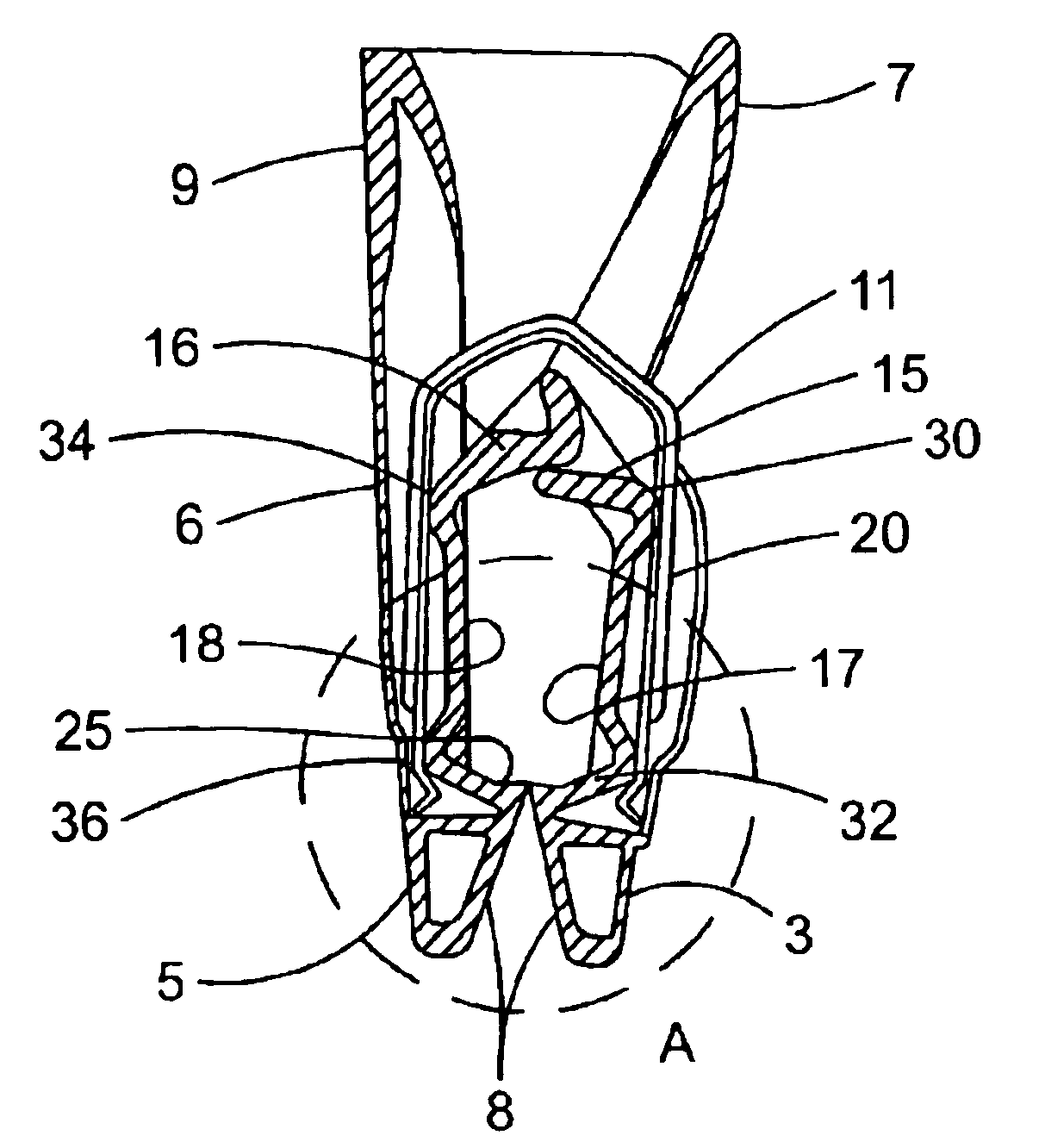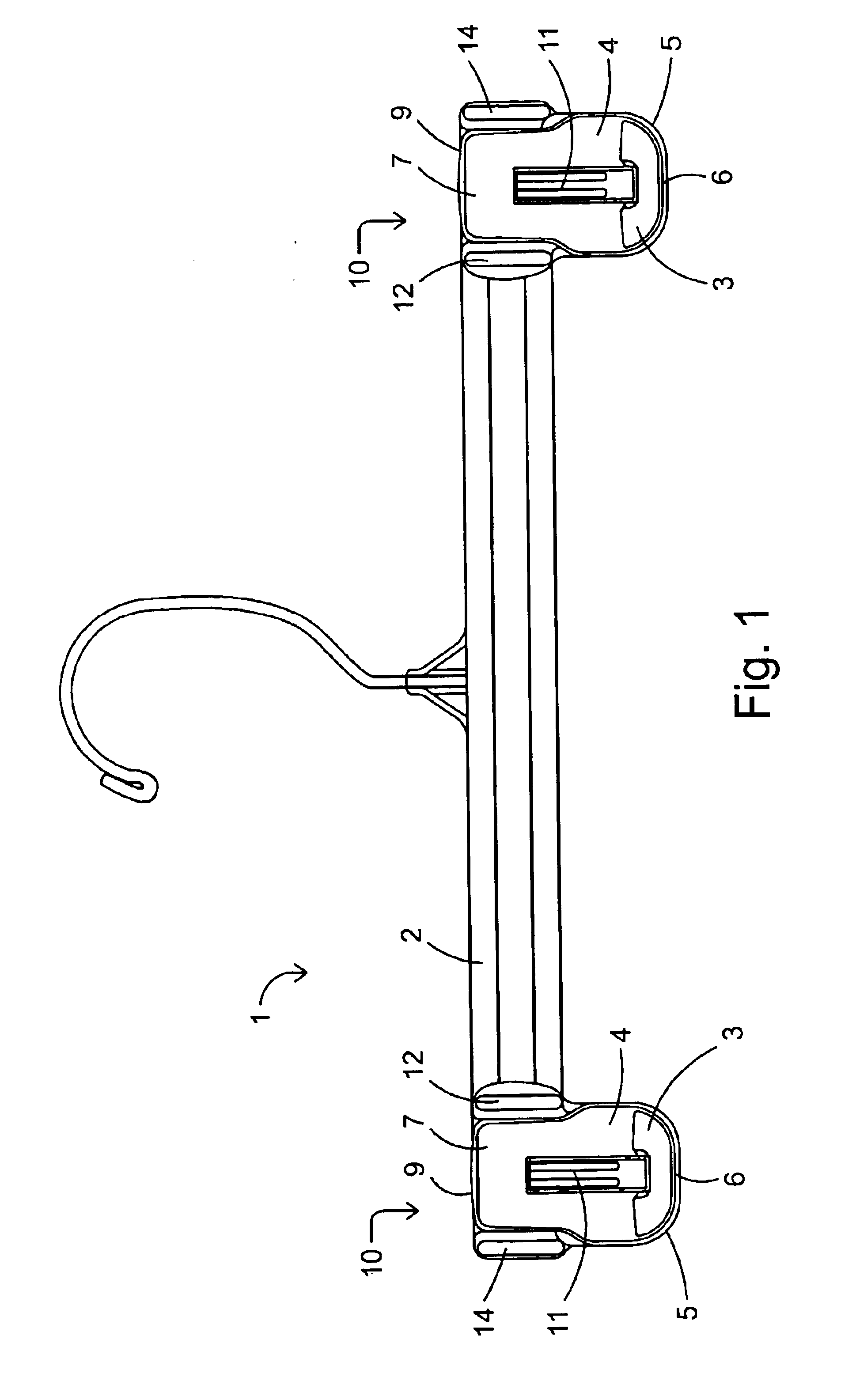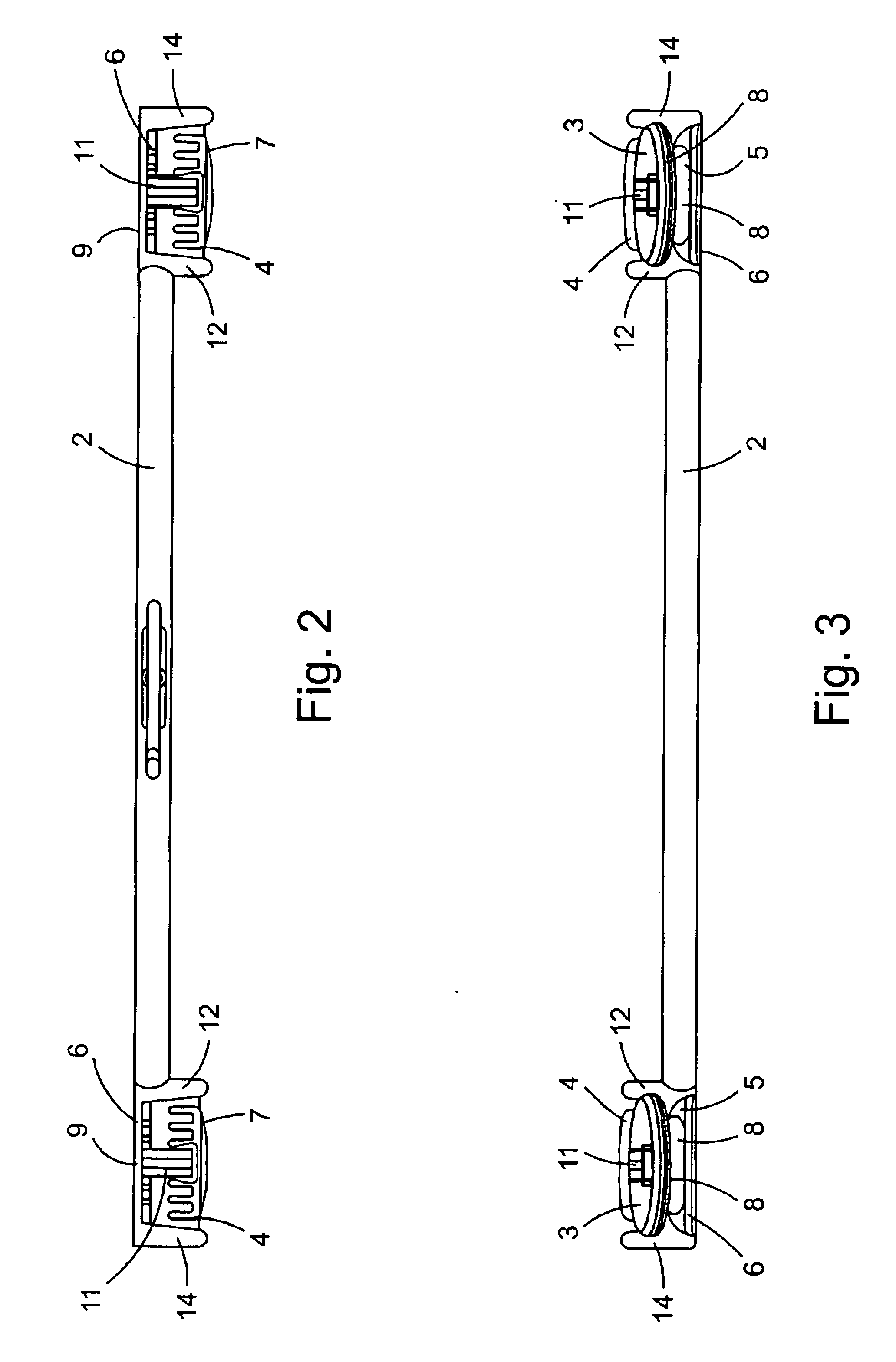Pinch-grip hanger
a technology of pinch-grip and hanger, which is applied in the field of pinch-grip hangers, can solve the problems of pinch-grip opening and losing the garment, not being well suited to the use of pinch-grip hangers in the transportation (shipping) of garments, and being highly undesirable, so as to prevent accidental opening of pinch-grip
- Summary
- Abstract
- Description
- Claims
- Application Information
AI Technical Summary
Benefits of technology
Problems solved by technology
Method used
Image
Examples
first embodiment
[0037]Referring to FIGS. 1-7, wherein like reference numerals indicate like elements, there is shown a garment hanger in accordance with the present invention. The garment hanger shown can be made from any suitable known material and by any suitable known method. Preferably, the garment hanger is made of injection molded plastic.
[0038]As shown in FIG. 1, the pinch-hanger 1 includes a pinch-grip 10 on each end of a hanger body 2. Each pinch-grip 10 includes a movable first gripping component or leg 4 and a stationary second gripping component or leg 6 secured to each other about a pivot axis. Each of components 4 and 6 includes respective lower ends 3, and 5 below the pivot axis for receiving a garment therebetween and respective upper ends 7 and 9 above the pivot axis. The upper ends 7 and 9 are preferably sized, in this first embodiment, to be substantially equal in length to their respective lower ends 3 and 5. This “long-lever engineering” allows for easier opening of the pinch-g...
second embodiment
[0055]Referring now to FIGS. 8 through 14, the pinch-hanger is disclosed. In this embodiment, the lower ends 3 and 5 of the pinch-grips legs 4 and 6 are extended, or elongated below the point at which the biasing force is applied by spring 11, to allow the pinch-grips to grab difficult to hang garments with enlarged waistbands or waistbands with a belt fitted thereto. This lengthening of the gripping space 20 permits the gripping teeth 8a to engage the garment below the stitching line of the waistband area. With this, the gripping portion 8 and gripping teeth 8a grab below the thicker waistband and hold the bulky garment very securely.
[0056]Longer springs may be fitted to also provide pressure behind the gripping teeth. This may not be necessary as gripping underneath the step provided by the waistband requires less pressure than is required normally.
[0057]All other components described above with reference to the first embodiment of FIGS. 1-7, and having the same reference numerals...
PUM
 Login to View More
Login to View More Abstract
Description
Claims
Application Information
 Login to View More
Login to View More - R&D
- Intellectual Property
- Life Sciences
- Materials
- Tech Scout
- Unparalleled Data Quality
- Higher Quality Content
- 60% Fewer Hallucinations
Browse by: Latest US Patents, China's latest patents, Technical Efficacy Thesaurus, Application Domain, Technology Topic, Popular Technical Reports.
© 2025 PatSnap. All rights reserved.Legal|Privacy policy|Modern Slavery Act Transparency Statement|Sitemap|About US| Contact US: help@patsnap.com



